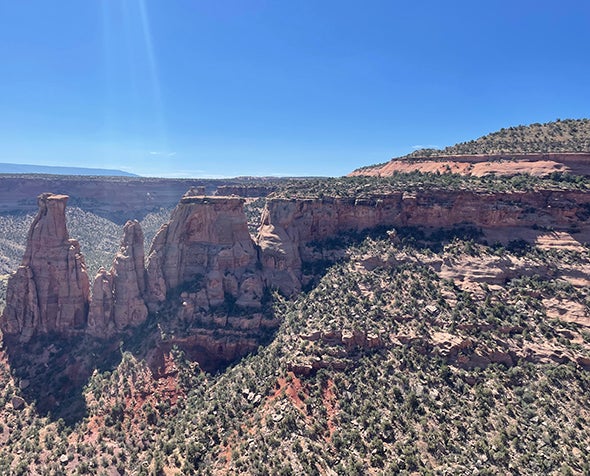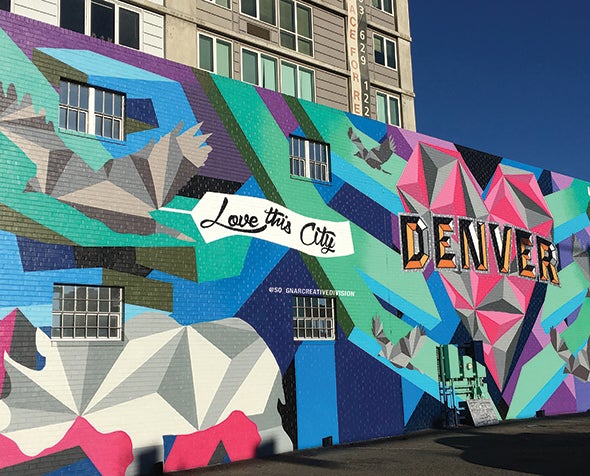Your Guide to Denver’s Four Seasons
No matter where you’re coming from, adapting to Denver’s ever-changing weather can be a challenge. Read on for a comprehensive seasonal survival kit.

Denver offers stunning landscapes, vibrant culture and weather patterns that can change in the blink of an eye. If you’re new to the area, adapting to Denver’s dynamic climate is essential for making the most of your experience—and having the right gear can make all the difference.
Let us walk you through what to expect from each season and the must-have items for your seasonal survival kit.
The First Two Weeks
Denver, known as the Mile High City, is at an elevation of 5,280 feet. This high altitude requires a period of adjustment. You may find that the sun feels more intense and the air drier. These factors combined means it’s easy to get thirsty—fast—and it’s crucial to stay hydrated during this time.
The city's semi-arid climate offers low humidity and abundant sunshine year-round. Daily temperatures can fluctuate significantly, with notably cooler mornings and evenings. Being mindful of these conditions will help you acclimate smoothly to your new environment.
Fall
As the summer heat fades, Denver experiences warm days accompanied by cool nights. The city undergoes a gradual transition to fall, with trees displaying saturated oranges and reds.
In the nearby mountains, the Aspen trees reach their peak yellow hues in late September and early October, making this period ideal for outdoor activities such as hiking, biking and exploring the surrounding areas. The clear blue skies and lower humidity contribute to excellent visibility and comfortable conditions.
Be aware that it is not uncommon for a few snowstorms to occur before the onset of winter, but most snowfall—even heavy accumulation—will often melt within a day or two.
Winter
Winter in Denver is characterized by contrasts: sunny and snowy, active and cozy, bustling and serene. The city often experiences milder temperatures in winter compared to other regions of the country. Although snowstorms can blanket the area, they are typically followed by clear, sunny skies that rapidly melt the snow.
Outdoor activities such as skiing, snowboarding, hockey, snowshoeing and ice skating are popular. Know that driving can be treacherous during and after snowfall, as the city doesn’t plow the roads as consistently as other snow-accustomed cities.
Spring
Spring in Denver is a season of renewal and unpredictability. As the snow melts and the days grow longer, the city rapidly transforms into a landscape of growth. Cherry blossoms in the city’s parks and gardens bloom along with the wildflowers in the foothills, signaling the arrival of warmer days.
The weather in Denver during spring can be quite variable. You might experience a sunny, warm day followed by a sudden rainstorm. The occasional spring snowstorm is often short-lived, quickly giving way to clear skies and fresh air. Snow sticks around in the mountains until the beginning of summer.
Summer
Summer in Denver is marked by hot, sunny days and comfortable, cool nights. Despite the generally dry climate, summer afternoons often bring brief but dramatic thunderstorms. These storms form quickly and can produce rain showers, lightning and occasional hail, but they typically pass just as swiftly as they appear, leaving the air refreshed and cooler.
From late June into July, wildflowers begin to bloom in the mountains, attracting outdoor enthusiasts of all kinds. However, in mid to late summer, Denver can be affected by smoke from wildfires, leading to occasional haze and fluctuating air quality. Keep these weather patterns in mind when planning outdoor activities.
Packing List
First time heading to the Mile High City? Try using this packing list as a launching point for whatever will be weighing down your suitcase at DIA.
Clothing
- Layers, including base layers for the colder months
- Activewear (non-cotton)
- Consider UPF clothing
- Hat for sun protection
- Casualwear for daytime city activities
- Waterproof boots for winter
- Warm hat, gloves and socks
- Winter coat (lightweight, breathable and waterproof, with a hood)
- Rain jacket
Gear
- Umbrella
- Sunscreen (aim for SPF 30–50)
- Sunglasses that block 100% of UVA and UVB rays
- Reusable water bottle
- Lip balm
- Lotion
Lifestyle items
- Snow removal tools for car owners (shovel, ice scraper and snow brush)
- Outdoor gear as desired: hiking boots, ski equipment, camping supplies, bicycle and helmet, etc.
- Humidifier if used to more humid climates
- Air purifier if sensitive to dust and smoke
- Electrolytes if prone to dehydration











